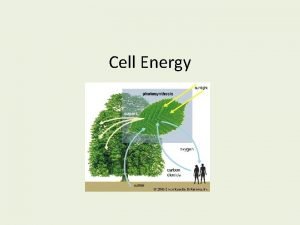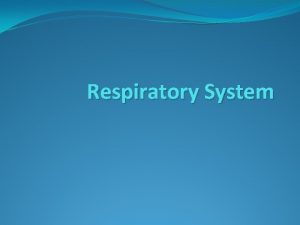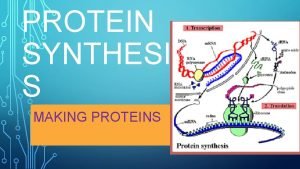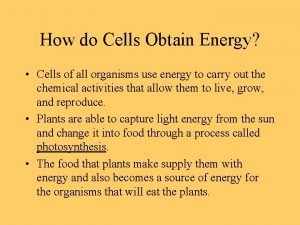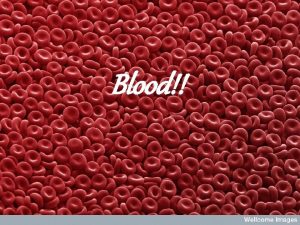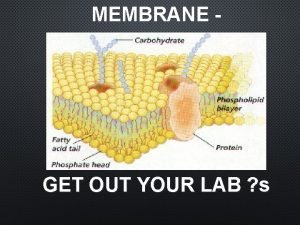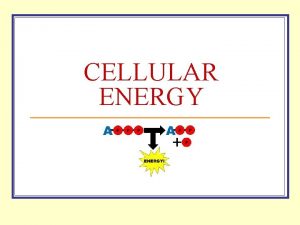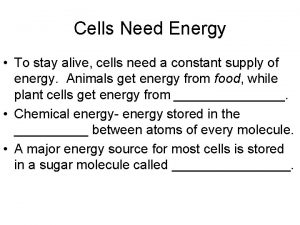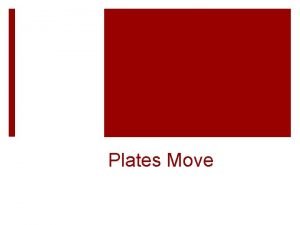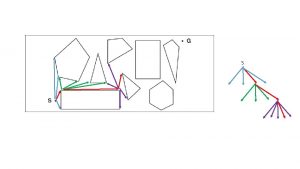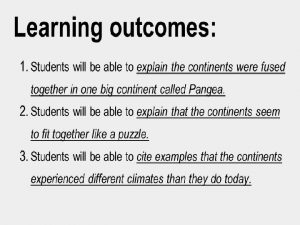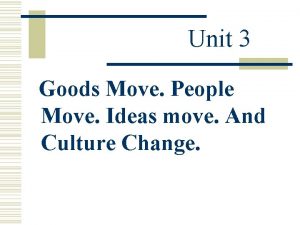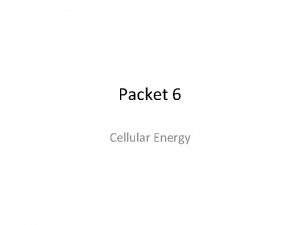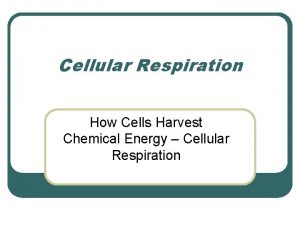CELLULAR ENERGY WHY DO CELLS NEED ENERGY Move












- Slides: 12

CELLULAR ENERGY


WHY DO CELLS NEED ENERGY? Move Muscle contraction Reproduction Transport molecules Remove wastes Chemical reactions Energy = the ability to do work

WHAT MOLECULE DO CELLS USE FOR ENERGY? ATP – Adenosine Triphosphate ATP ADP Triphosphate tail is unstable and can be broken (releasing energy) ATP ADP = energy Can we reuse ADP? ?

WHERE DO CELLS GET THE ENERGY TO MAKE ATP? Cellular respiration is the process that releases energy by breaking down food molecules in small steps. Converts ADP into ATP Aerobic Respiration – requires oxygen Anaerobic Respiration – does not require oxygen (also called fermentation)

STEP 1 - GLYCOLYSIS Glycolysis is the process in which one molecule of glucose is broken in half, producing two molecules of pyruvate. Happens in the cytoplasm of the cell. A 6–carbon sugar is broken into 2 3 -carbon sugars Net ATP production is 2

IF NO OXYGEN IS PRESENT… The cell goes through fermentation Alcoholic fermentation is done by yeasts and some microorganisms. Pyruvate is broken down into alcohol & Carbon Dioxide Lactic Acid fermentation is done by bacteria and animals. Pyruvate is converted into lactic acid In animals - muscles during rapid exercise when the body cannot supply enough oxygen. Causes muscle cramping and fatigue.


Review Name the following: Outer Membrane A_______ Inner Membrane B______________ Cristae Matrix D_______

IF OXYGEN IS PRESENT… Krebs Cycle Happens in the matrix of the mitochondria. Pyruvate is broken down into carbon dioxide in a series of energy-extracting reactions. Net ATP Production is 2 ATP.

AND THEN… Electron Transport Chain Happens in the christae of the mitochondria The electron transport chain uses the high-energy electrons from the Krebs Cycle to convert ADP to ATP.

TOTAL ATP respiration produces a total of ● Overall, aerobic 36 molecules of ATP PRODUCTION Glycolysis Citric Acid Cycle Electron Transport Chain 2 ATP 32 ATP Total ATP Produced 36 ATP
 Nondisjunction in meiosis
Nondisjunction in meiosis Why do cells need energy
Why do cells need energy Couter
Couter Why do we need cells
Why do we need cells Why did robert hooke name cells “cells”?
Why did robert hooke name cells “cells”? How do cells obtain energy
How do cells obtain energy Pictures
Pictures Lateral thinking brain teasers
Lateral thinking brain teasers Section 1 how organisms obtain energy
Section 1 how organisms obtain energy Fluid portion of blood in which blood cells move
Fluid portion of blood in which blood cells move What compounds do cells need
What compounds do cells need What cells need isotonic solutions to be at homeostasis
What cells need isotonic solutions to be at homeostasis Paranasal sinus development
Paranasal sinus development

